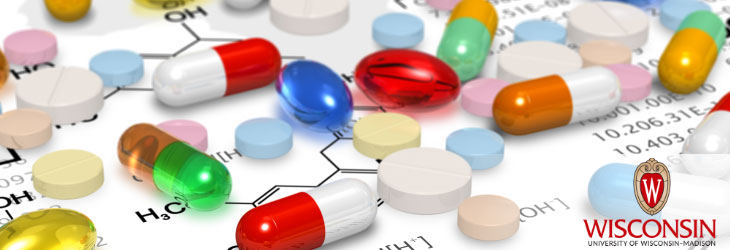Therapeutics & Vaccines

Small Molecule Therapeutics to Inhibit HPV Infection
WARF: P07490US02
Inventors: Paul Ahlquist, Paul Lambert, Dohun Pyeon, Shane Pearce
The Wisconsin Alumni Research Foundation (WARF) is seeking commercial partners interested in developing methods and therapeutics to inhibit double-stranded DNA virus infection, particularly HPV infection.
Overview
Human papillomaviruses (HPVs) are the most common sexually transmitted pathogens. These small DNA viruses are associated with almost all cervical cancers and 20 to 30 percent of head and neck cancers.
Cervical cancer is the second most common cancer in women worldwide. It is a major cause of morbidity and mortality. Head and neck cancer is the fourth most frequent cancer worldwide and the sixth most common cancer in the U.S. The survival rate is less than 50 percent, and that statistic has not improved in decades.
Vaccines against HPV have been developed, but their long-term effects and ability to prevent cervical cancer are unknown. Even if current vaccines are 100 percent effective, they only will prevent cancers arising from infection by two of the high risk HPV genotypes, HPV16 and HPV18. Because the vaccines are not expected to show an impact on the frequency of cervical cancer until 2040 or later, new therapies to effectively treat or prevent HPV infections could be of great value to clinicians and their patients.
Cervical cancer is the second most common cancer in women worldwide. It is a major cause of morbidity and mortality. Head and neck cancer is the fourth most frequent cancer worldwide and the sixth most common cancer in the U.S. The survival rate is less than 50 percent, and that statistic has not improved in decades.
Vaccines against HPV have been developed, but their long-term effects and ability to prevent cervical cancer are unknown. Even if current vaccines are 100 percent effective, they only will prevent cancers arising from infection by two of the high risk HPV genotypes, HPV16 and HPV18. Because the vaccines are not expected to show an impact on the frequency of cervical cancer until 2040 or later, new therapies to effectively treat or prevent HPV infections could be of great value to clinicians and their patients.
The Invention
UW–Madison researchers have developed new methods and compositions for inhibiting HPV infection. These inhibitors could complement and/or replace current vaccine treatment.
The researchers found that cell cycle progression through mitosis is critical for HPV infection. Host cells must pass through early prophase before transcription of HPV-encapsidated genes. Exposing a papillomavirus to an effective amount of a G1, S, G2 or early M phase cell cycle inhibitor or administering one of the inhibitors to a susceptible tissue or cell therefore provides a new approach to the prevention and treatment of HPV infection.
The researchers found that cell cycle progression through mitosis is critical for HPV infection. Host cells must pass through early prophase before transcription of HPV-encapsidated genes. Exposing a papillomavirus to an effective amount of a G1, S, G2 or early M phase cell cycle inhibitor or administering one of the inhibitors to a susceptible tissue or cell therefore provides a new approach to the prevention and treatment of HPV infection.
Applications
- Prevention or treatment of HPV infection
- Inhibition of other papovaviruses, double-stranded DNA viruses or retroviruses
Key Benefits
- Provides a new approach for the development of preventive and therapeutic strategies against HPV infection
- Increases understanding of HPV by defining a major condition for cell susceptibility to HPV infection
- Could be incorporated into a variety of products, including spermicides, lubricants, suppositories, ointments or tampons